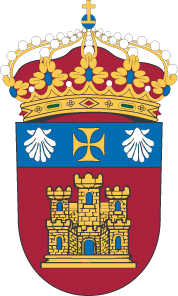Por favor, use este identificador para citar o enlazar este ítem: http://hdl.handle.net/10259/9678
Título
Recuperación de ácido cafeico de disoluciones acuosas mediante extracción de punto de turbidez con tensioactivos no iónicos
Autor
Director
Fecha de lectura/defensa
2024-07-12
Resumo
Food waste has become one of the main problems around the world. More than 85 million tons
of food are wasted per year in the European Union, and this waste is generated at different
stages throughout the entire food chain. One of the main challenges facing the food industry
is being able to minimize or reuse the high amount of waste generated during food processing,
which represents a very significant challenge at an environmental, social and economic level.
In recent years, different treatments have been proposed for the treatment of these wastes, in
order to recover the high added-value compounds present in them for subsequent use, mainly
in agri-food, pharmaceutical and cosmetic industries.
Among these compounds, the polyphenols present in plants, fruits and vegetables stand out.
Polyphenols are bioactive compounds with low solubility in water and are very beneficial for
human health due to their antioxidant properties and their ability to prevent chronic diseases
such as obesity, cardiovascular diseases and different types of cancer. The most commonly
used techniques for the extraction and recovery of polyphenols are not very sustainable and
are harmful to the environment, since they use toxic organic solvents. Clean technologies have
been investigated as alternatives for the recovery of these compounds in a more economical
and environmentally sustainable way.
The main objective of this work was to study the technical feasibility of a cloud point extraction
process using non-ionic surfactants for the recovery of a model polyphenol (caffeic acid) from
aqueous solutions, avoiding the use or organic solvents and allowing the recovery and reuse
of these compounds, promoting circular economy and sustainability practices in the food
industry.
Three non-ionic surfactants were tested, among which Triton X-114 (15% w/v) was selected
for subsequent extraction experiments due to its lower cloud point. A design of experiments
was performed using response surface methodology (RSM) and central composite design
(CCD) for the evaluation of the effect of three factors (temperature, extraction time and salt
(NaCl) concentration) on the caffeic acid extraction degree from aqueous solutions (500 mg/L
caffeic acid) and the optimization of the operating conditions used in the cloud point extraction
process. Caffeic acid content (Folin-Ciocalteu method) and antioxidant capacity (BRS
voltammetric method) of the aqueous phases and extracts (surfactant-rich phase),
respectively, obtained after cloud point extraction were also determined. The following optimum
operating conditions were obtained: temperature of 40 ºC, 40 minutes of extraction time and
10% (w/v) salt concentration (NaCl) added to the feed to lower the cloud point and promote
phase separation.
For these optimum operating conditions, the model proposed in the design of experiments
predicted a caffeic acid extraction degree of 97.22%. Experimentally, a 95.86% of caffeic acid
extraction was obtained working under the aforementioned optimum operating conditions. This
percentage increased to 97.55% when the extraction was carried out in two stages, obtaining
an extract with a high antioxidant capacity (2804.2 ± 91.7 BRS units).
The use of the cloud point extraction process proposed in this work would contribute to
achieving some of the Sustainable Development Goals (SDGs), such as SDG 9 (Industry,
innovation and infrastructure) and SDG 12 (Responsible consumption and production).
Palabras clave
Caffeic acid
Non-ionic surfactants
Cloud point extraction
Design of experiments
Materia
Ingeniería química
Chemical engineering
Aparece en las colecciones
Documento(s) sujeto(s) a una licencia Creative Commons Attribution-NonCommercial-NoDerivatives 4.0 Internacional










